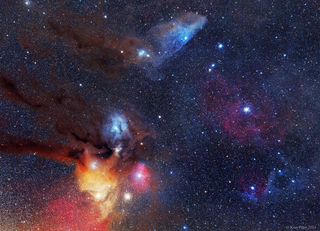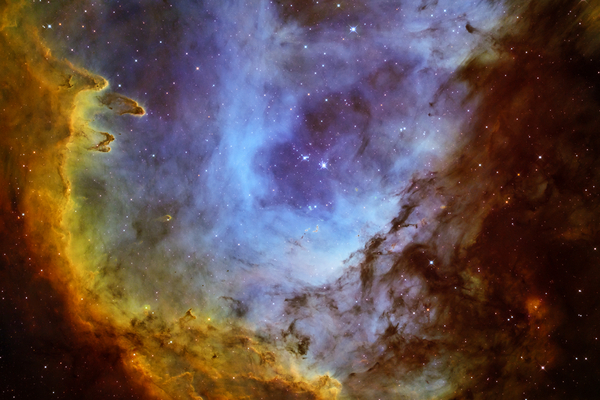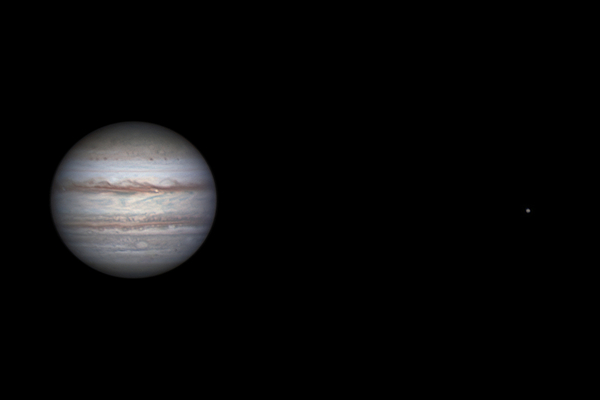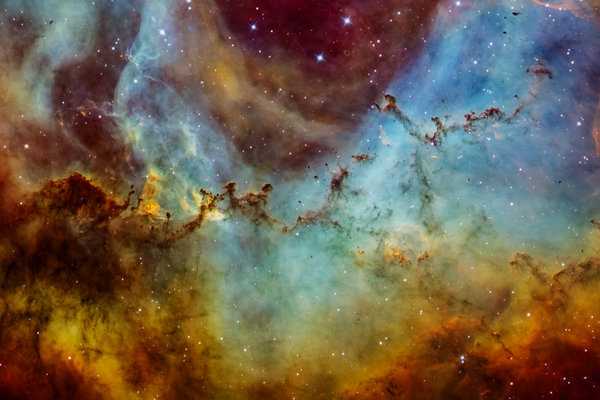Astrophoto of the month - July 2021 - Antares and its surroundings
Péter Kiss's curiosity image shows the unique southern object from Hungary
A wonderful and special astrophotography image each month by Hungarian astrophotographers.
The mists around Antares
Antares is a red supergiant star that, if placed in the Solar System, would even absorb the orbit of Mars, in a word, its extension is huge, not just its light. Of course, from the Earth - due to its great distance - we can only observe the latter on summer nights, looking at the sky near the southern horizon. Interestingly, it is surrounded by an orgy of reflection nebulae that is invisible to the naked eye but astonishingly spectacular on astrophotos, glowing yellow in the light of the Antares. (Antares itself can be seen hidden in the yellow fog in the shot)
An attraction in the southern hemisphere
Despite its extraordinary beauty, very few pictures are taken of this unique region, which rivals the view of the famous Orion Nebula, or even the Andromeda Galaxy. There is a simple reason for this. Antares is located in the southern hemisphere, and although we can see the star itself with the naked eye, we cannot photograph its exciting surroundings from home. So far, all successful shots have been taken south of Hungary, the most beautiful Hungarian photos were taken under the sky of the southern hemisphere, mostly during Namibian deep-sky expeditions.
Photo by Péter Kiss
In this respect, the astrophoto of the month by Péter Kiss is an extraordinary curiosity. This is because it is the first image that shows the region in almost all its splendor and was taken within the country. This is an amazing and unexpected achievement, so far no one expected such a result. Then this summer brought the breakthrough that the author reports on:
The Antares region, the Blue Horsehead Nebula, and countless spectacular objects whose names I don't even know are all in the field of view of the 135mm focal length lens, the only issue is that it is almost impossible to capture this area from Hungary.
I like to push the boundaries, and when I took this picture, I was curious about the lowest possible location to take photos from the higher observation mound of the future, extremely dark-sky, light-pollution-free observation site of the Hungarian Astrophotographers' Association in Törökoppány.
Antares reaches its culmination at about 16 ° above the horizon, which is extremely low. At this height, practically everywhere in Hungary, the lights of settlements interfere. Shooting had to start so low that the tree branches just did not hang into the composition. Seeing the first pictures, the question arose - why am I wasting my time? Then, the higher the target crawled, the clearer the raw images became, and after half an hour, the blue reflection nebulae loomed, thanks to the extremely clear and light pollution-free sky that has just set it.
Image processing through the eyes of the author
Image processing was. of course. difficult. In addition to the gradient caused by the light pollution, a calibration error occurred, but the correction went relatively smoothly. (The Pixinsight DBE developer almost deserves to be paid a beer by now :)) So is that actually possible in Törökoppány? The answer is: yes, when the atmosphere is clear. If I remember correctly, we were after the cold front (when I made the first series), the transparency was very good. The first series provided the backbone of processing. The second night wasn’t bad either (a few days later), but the third series became ridiculously poor. Of course, not surprisingly, it’s only worth photographing so low if the transparency is good, so the luck factor isn’t negligible. The fog in the lower right corner is like a hand holding a sphere made of red rubies, I really like it!
Péter Kiss





